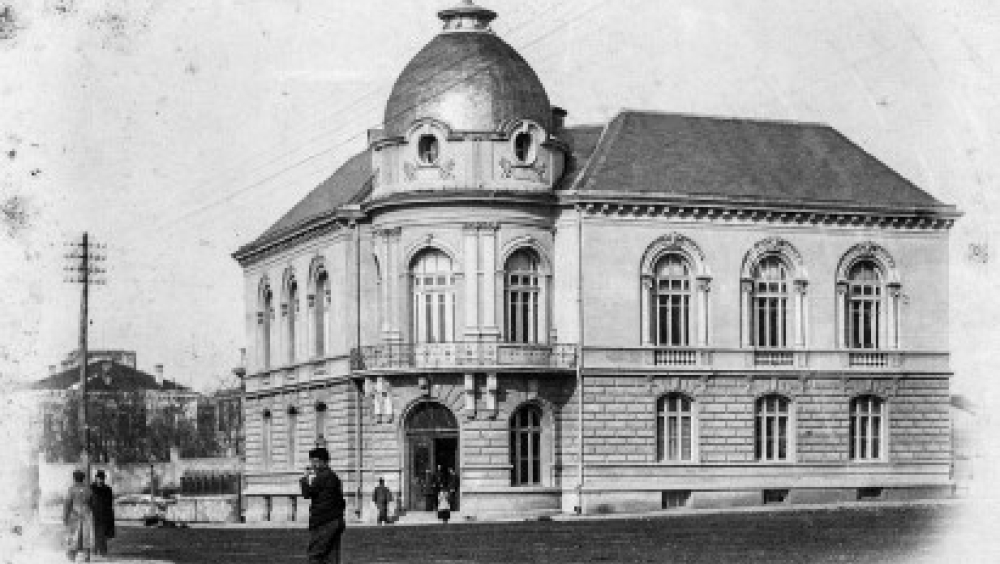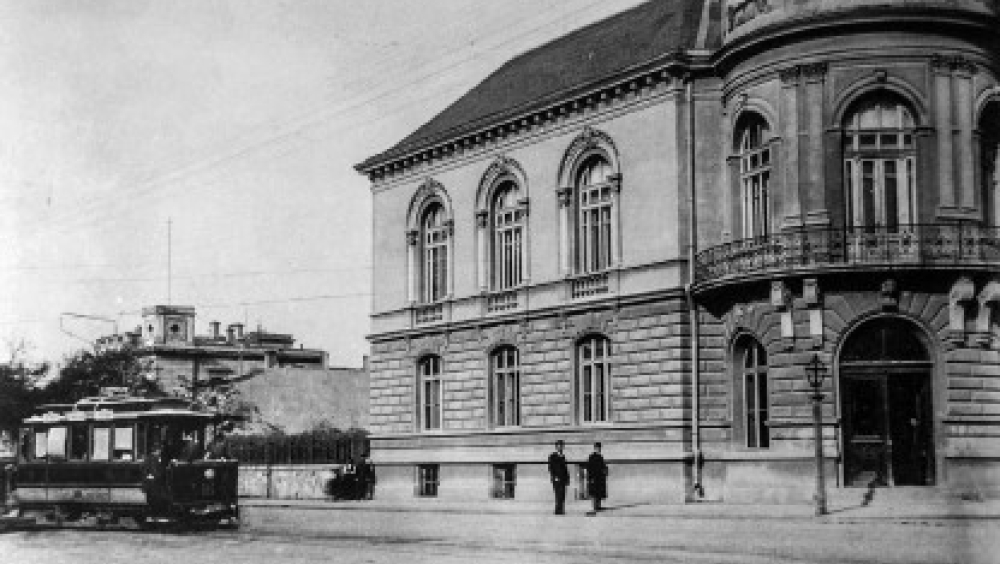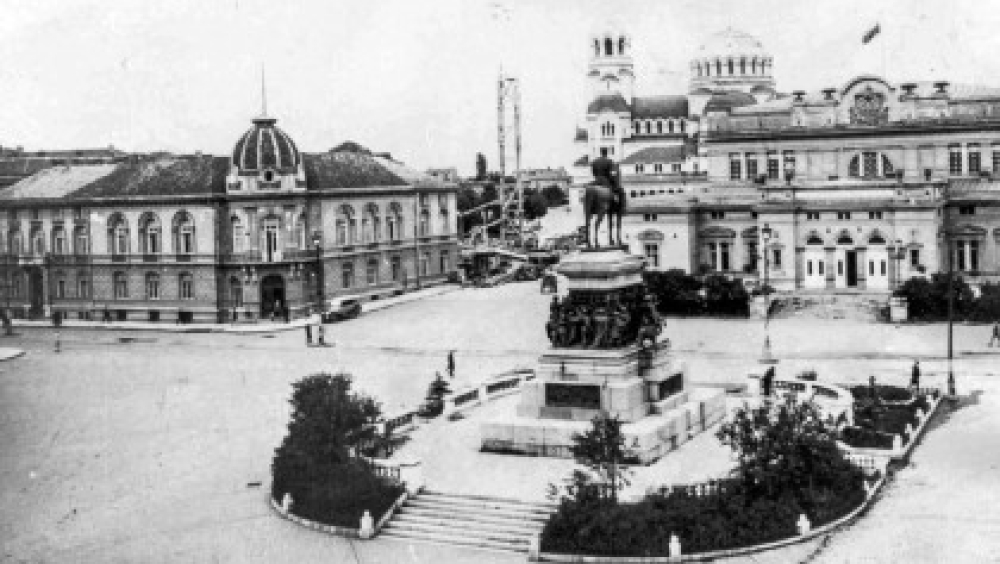The building of the Bulgarian Academy of Sciences - 130 years of history, told by its first inhabitants
130 years ago the construction of the first house of the Bulgarian Literary Society – today the Bulgarian Academy of Sciences, was completed. That is the corner wing of the building of the Academy on 15th of November Str. The emblematic building, which until today not only adorns one of the central squares of the capital - National Assembly Square, but is also a symbol - the pursuit of knowledge, cultural affirmation and progress of society.
The history of the construction and management of this temple of science is curious. In the first 40 years of its existence, it is home to a number of important statesmen in Bulgarian history, but not to the scientists and educators for whom it was intended.
The work of some of the most famous architects of the 19th and 20th centuries, the building represents 30 years of the development of post-liberation architecture in Bulgaria. The first wing, designed by Heinrich Jakob Mayer and Theodor Hünervadel from 1892 and Petko Momchilov from 1906, and the second - by Yrodan Yordanov - Sava Ovcharov from 1925. A monument of our immovable cultural heritage, which we would not have had if not for the patriotic, enlightened and knowledge-seeking creators and followers of the Bulgarian Literary Society, who generously donated their thoughts, energy and finances so that the Academy could exist and is developing in favor of the state of Bulgaria.
Today, the building of the Bulgarian Academy of Sciences is not only a place of cultural significance, but also a symbol for generations to come of what can be achieved for the good of society by donating what you have in the name of an immortal cause. That is why we would like to keep telling her story and 130 years later we will start this narration with the creation of a cultural and information center in the emblematic building of the Bulgarian Academy of Sciences. In this way, the story, told by the first occupants of the House of Science, will continue to exist and be passed on by word of mouth, thanks to the opportunity for every resident or guest of the city to visit the center and learn from the first occupants of the building.
Nearly 40 years have passed from the first sod for the future home of the Bulgarian Literary Society to the final building of the Bulgarian Academy of Sciences as we know it today. The history of its construction reveals factors and forces driving not only its construction, but also the construction of the Academy itself. I believe that ideals, patriotism, spirit, literacy, decency are words with fading functions in modern Bulgarian vocabulary, but if 150 years ago were not words with a powerful spiritual and energetic charge, today there would be no Bulgarian Academy of Sciences.
Marin Drinov (1838-1906) historian and philologist, chairman of the Bulgarian Literary Society from 1869 to 1882 and from 1884 to 1894 says:
We founded the Bulgarian Literary Society on October 12, 1869 in the Romanian city of Braila. Its purpose, enshrined in its first statute of 1869, was to spread education among Bulgarians, to improve the Bulgarian language and study Bulgarian history and life, to be a scientific center and to establish contacts with similar research centers abroad. I am its first chairman - Revival writer, historian and statesman, patriarch of Bulgarian science.
The building on the National Assembly Square owes its life to my work. Nine years after its founding, in 1878, after the deliberation of our country from the Ottoman Empire, we moved our headquarters from Braila to Sofia to continue our activities in our homeland. Prince Alexander I, the political figure at the helm of Bulgaria at the time, agreed to be his supreme patron.
Vasil D. Stoyanov (1839-1910) philologist, chairman of the Bulgarian Literary Society from 1882 to 1884 tells:
Four years later, the need to have a home is growing. Thus, in 1882 we asked the Sofia City Municipal Administration to provide us with land on which to build our own building. Then, as a Chairman, I received an invitation to talk to Prince Alexander I, who gave his support. On March 6, 1884, the Sofia City Administration donated land to us on the then Tsarigradska Street.
First we invited the Viennese architect of Bulgarian origin Konstantin Jovanovic, who prepares drawings and calculations for the cost of construction, to offer his project. Later we reoriented ourselves to Jakob (Herman) Heinrich Meyer, a Swiss man who arrived in Bulgaria after the Liberation. In 1890, the Board of Directors of the Society approved the project of Jakob Meyer and Theodor Hünervadel. The months after that we devoted to intensive discussions, evaluation of offers and organizational activities for the construction of our future home.
The first sod of the building was made solemnly on October 5, 1890 in the presence of the entire Board of Directors and members of the Society. In the foundations we built the act for laying the foundation stone, signed by the Board of Directors, the chief architect Jakob Meyer and the entrepreneur Nikola Dukov. Along with it is the complete list of all regular, auxiliary, correspondent and honorary members of the Society - over 520 people. With this symbolic act we declared our commitment to this great work of Bulgarian science and so we forever linked our names with the construction and soul of the building.
The first stage of construction - the two floors of today's corner block - was completed at the end of 1892. As the value of the building exceeded many times the planned amount, we had to take out a loan from the National Bank. In order to be able to pay it, we had to rent the building to the Ministry of Foreign Affairs and Religions (MFA) for an indefinite period. Thus, its first inhabitants were not its owners, and it turned out to be a Shakespearean "servant of two masters" until 1944.
Ivan E. Geshov (1849-1924) politician, chairman of the Bulgarian Academy of Sciences from 1898 to 1924 says:
Over the next 50 years, the cabinets with panoramic views of the square and parliament have become unspoken witnesses to the political skills of nearly 20 foreign and religious ministers from various parties and governments.
Far from its building, the Bulgarian Literary Society continues to accumulate scientific potential and academic output. The name "society" began to dissatisfy us and during the Annual Meeting in January 1907 the lawyer Anton Kableshkov proposed the idea to be transformed into an academy. I contributed to the realization of our dream by repaying in 1908 with personal funds the mortgage loan of BGN 120,000, used for the construction of the building.
Thus, at the beginning of 1911, the Bulgarian Academy of Sciences became a reality. It has become an independent institution with sufficient funds and to be able to function as a truly free academy, financially independent from birth. We adopted a new Statute, which reaffirmed that "the Academy is an independent scientific institution that aims to develop and disseminate science and art, especially with regard to Bulgarians and Bulgarian lands, the Bulgarian language and Bulgarian literature." According to the first Law of the Bulgarian Academy of Sciences from 1912, "the Academy is under the high patronage of His Majesty the King of the Bulgarians."
I remained chairman until my death in 1924. Together with the 13 years at the head of the Bulgarian Literary Society before that I was again the man who held the helm of the leading scientific institution in Bulgaria for the longest time. I also turned out to be the first president of the Academy to inhabit its building on National Assembly Square - but not as head of the institution, but as Minister of Foreign Affairs (1911-1913), combining this post with the post of Prime Minister. During all these years, I managed to combine my scientific and managerial activities, following the belief that "the best guarantee of good governance is an enlightened people."
Nikola Mushanov - Minister and Prime Minister of Bulgaria (1931-1934) says:
After Geshov, a series of statesmen, like him, standing not only at the head of our foreign affairs, but also of the executive branch, connected their political activity with the building of the Bulgarian Academy of Sciences. The first Bulgarian diplomat, Nadezhda Stanchova, who was appointed legation secretary and who declares Glasgow Herald the first woman diplomat in the world, probably left for London after the First World War.
Lubomir Miletich (1863-1937) philologist, chairman of the Bulgarian Academy of Sciences from 1926 to 1937 says:
In June 1924, the idea for a new, larger building dates back to June 1924, but the decision to start construction was made a year later. The foundation stone of the new building was laid on 27th of May 1926. In 1927 it was completed, and in June 1928 it hospitably opened its doors for the Annual General Assembly of the Bulgarian Academy of Sciences. The building was solemnly consecrated on 14th of May 1929 during the official celebration of the 50th anniversary of the Liberation of Bulgaria and the 1000th anniversary of the era of Simeon the Great. By elegantly integrating the existing wing into the new composition, architects Sava Ovcharov and Yordan Yordanov turned the BAS building into a harmonious architectural ensemble, preserved to this day despite the destruction of World War II bombing.
The new building provided conditions for the creation of a modern and comfortable library block with a book depository, a room for periodicals, study rooms for academics and librarians. Intensive work began on the compilation of catalogs and card indexes, on the signing of the entire library fund.
Acad. Todor Pavlov (1890-1977), philosopher, chairman of the Bulgarian Academy of Sciences from 1947 to 1962 tells:
The air raids on Sofia in early 1944 partially destroyed the central building of the Bulgarian Academy of Sciences and its organizational life was suspended. Another architect added his name to the constellation of masters who created the building of the Academy - we entrusted the restoration work to architect Lyuben Konstantinov, author of the project for the south wing of Sofia University.
The building of the Bulgarian Academy of Sciences has its place on the cultural map of Europe not only in terms of its architectural qualities as a monument, part of the immovable cultural heritage of Bulgaria, but also as an institution. An institution that has gathered over 150 years of history, in which a number of important personalities of the 19th and 20th centuries have embedded their deeds and ideals. And knowing their history, we will more easily understand their messages.
This is a cultural heritage, an identity that must be preserved and told. In this sense, the building is extremely important for the region from a tourist point of view. Through the many exhibitions, open days and other events we organize, we try to preserve and tell about this heritage, a symbol of knowledge and cultural identity.





